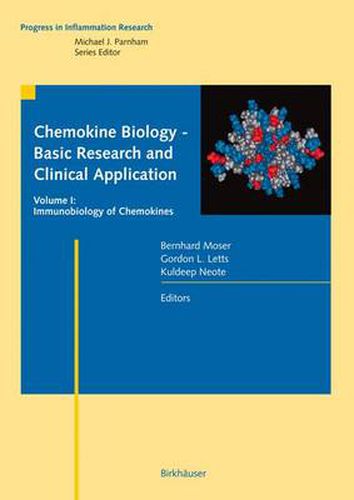Readings Newsletter
Become a Readings Member to make your shopping experience even easier.
Sign in or sign up for free!
You’re not far away from qualifying for FREE standard shipping within Australia
You’ve qualified for FREE standard shipping within Australia
The cart is loading…






Chemokines play an important role in recruiting inflammatory cells into tissues in response to infection and inflammation. They also play an important role in coordinating the movement of T-cells, B-cells and dentritic cells, necessary to generate an immune response (response to injury, allergens, antigens, invading microorganisms). They selectively attract leukocytes to inflammatory foci, inducing both cell migration and activation. They are involved in various diseases, like atherosclerosis, lung and skin inflammation, multiple sclerosis, or HIV. Volume 1 of this two-volume set discusses the immunobiology of chemokines. It is divided into two parts: a) cellular targets in innate and adaptive immunity, and b) effector cell traffic-unrelated functions. Together with volume 2, which discusses the pathophysiology of chemokines, both volumes give a comprehensive overview of chemokine biology.
$9.00 standard shipping within Australia
FREE standard shipping within Australia for orders over $100.00
Express & International shipping calculated at checkout
Chemokines play an important role in recruiting inflammatory cells into tissues in response to infection and inflammation. They also play an important role in coordinating the movement of T-cells, B-cells and dentritic cells, necessary to generate an immune response (response to injury, allergens, antigens, invading microorganisms). They selectively attract leukocytes to inflammatory foci, inducing both cell migration and activation. They are involved in various diseases, like atherosclerosis, lung and skin inflammation, multiple sclerosis, or HIV. Volume 1 of this two-volume set discusses the immunobiology of chemokines. It is divided into two parts: a) cellular targets in innate and adaptive immunity, and b) effector cell traffic-unrelated functions. Together with volume 2, which discusses the pathophysiology of chemokines, both volumes give a comprehensive overview of chemokine biology.